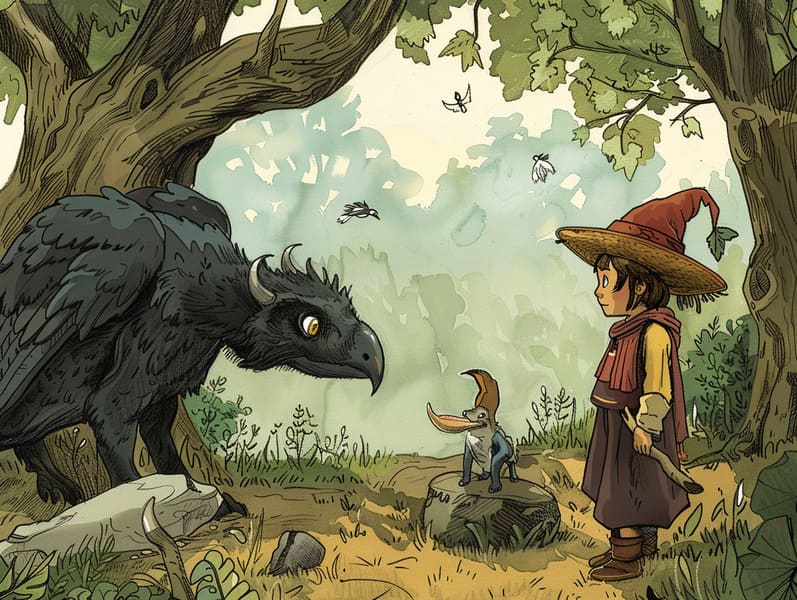The Inception of Famous Fairy Tales with the Consistent Grace.
The Inception of Famous Fairy Tales with the Consistent Grace.
Blog Article

Ancient fairy tales have enduring presence. These stories have been conveyed from one generation to the next ages before they were ever published. They originated from a variety of traditions, including Eastern traditions. They were initially narrated among grown-ups, often carrying themes and messages aligned with the societal norms and beliefs of the time.
The famous Grimm duo, Jacob and Wilhelm, were among the first to collect and release many of these beloved narratives. Their anthology, "Grimm's Fairy Tales," included stories like "Cinder Maid," "Hansel and Gretel," and "Snow-White and Rose-Red," which have since become mainstays in the world of traditional fairy tales. Similarly, H. C. Andersen's magical tales, such as "The Mermaid," and "The Ugly Duckling," have gained the love worldwide, cementing their place in the pantheon of treasured fairy tales.
Despite their historical roots, traditional fairy tales remain as important as ever, especially as kids' bedtime tales. These whimsical stories are now available in different formats, including vividly illustrated books, delightful animations, and web-based fairy tales.
Their lasting appeal can be attributed to several whimsical characteristics:
Important Morals: Old fairy tales often offer important moral lessons. Fairy tales like "The Tale of the Boy Who Cried Wolf" teach the virtue of sincerity, while "The Tale of the Tortoise and the Hare" show the virtues of persistence and meekness. These narratives offer young ones clear distinctions between correct and incorrect, building their moral compass in a subtle yet profound way.
Compassion and Insight: Fairy tales frequently portray characters facing obstacles and hardships, prompting children to comprehend with their struggles and cheer for their triumphs. For instance, "The Story of Beauty and the Beast" conveys the virtue of seeing beyond looks to see the real person of a being, strengthening warmth and appreciation.
Cultural Recognition: Many classic fairy tales are rooted in the cultural contexts from which they arose. Reading these tales can provide delightful insights into different customs, enhancing a sense of global insight and respect.
Imagination and Creativity: The fantastical elements in old fairy tales—talking beasts—activate children’s fantastical thinking. These fairy tales bring readers to extraordinary realms, revitalizing creative thinking and a sense of fascination that remains a lifetime.
Ancient fairy tales are not only fascinating but also teaching. They provide charming tools in developing various intellectual and emotional capacities in young ones. When old fairy tales are recited, they enhance verbal skills by bringing new lexicon and complicated sentence structures. This practice also strengthens auditory perception and focus, as the young remain attentive, ready to see what happens next.
Furthermore, discussing the themes and characters of ancient fairy tales can foster thinking skills and problem-solving abilities. Young ones are led to pinpoint patterns, guess what will happen, and make sense of cause and effect. These contemplations also assist children communicate their thoughts and feelings, boosting their emotional intelligence.
In today’s information age, the accessibility of free fairy tales online has made these narratives more attainable than ever. Websites and web apps make available ample collections of children's fairy tales that can be seen or listened through anytime, anywhere. Fairy tales spoken are particularly favored, supplying an fascinating method for young readers to appreciate these entrancing tales. Voice books and read-aloud videos take characters and settings to life, often paired with captivating music and background music that augment the narrative journey.
The unending appeal of classic fairy tales lies in their ability to shift to modern times while holding onto their fundamental ideas. Contemporary takes of these stories often integrate more diverse protagonists and modern settings, making them relevant to today’s audience. However, the central morals of daring, kindness, and lawfulness remain unchanged, continuing to connect with audiences of all ages.
Old fairy tales also offer a sense of warmth and knownness. They showcase a here coherent narrative with a transparent beginning, middle, and end, often concluding with the closure of conflicts and the triumph of goodness over badness. This constancy can be comforting for little ones, gifting a sense of sturdiness in an always shifting world.
Old fairy tales continue to fascinate and enlighten new generations, maintaining their allure and meaningfulness in modern society. As children's night stories, they confer upon a perfect blend of fascination and comprehension, supporting moral values, empathy, and creativity. The availability of free fairy tales online and the widespread nature of fairy tales spoken promise that these timeless fairy tales remain accessible to new generations.
By safeguarding and communicating these fairy tales, we continue to laud the rich tapestry of human imagination and cultural heritage. Whether you are viewing a beautifully illustrated book, enjoying a cyber library, or listening via an sound book, the mystique of classic fairy tales is always within reach. These fairy tales show us of the persistent spell of storytelling and its ability to gather us across time and space.
Regardless if you are perusing a vibrantly illustrated book, seeing a cyber library, or listening through an read-aloud story, the majesty of ancient fairy tales is always within reach.
These narratives reveal of the eternal essence of fairy tales and its ability to bind us across epochs and places, creating a bond that fascinates and enlightens alike.